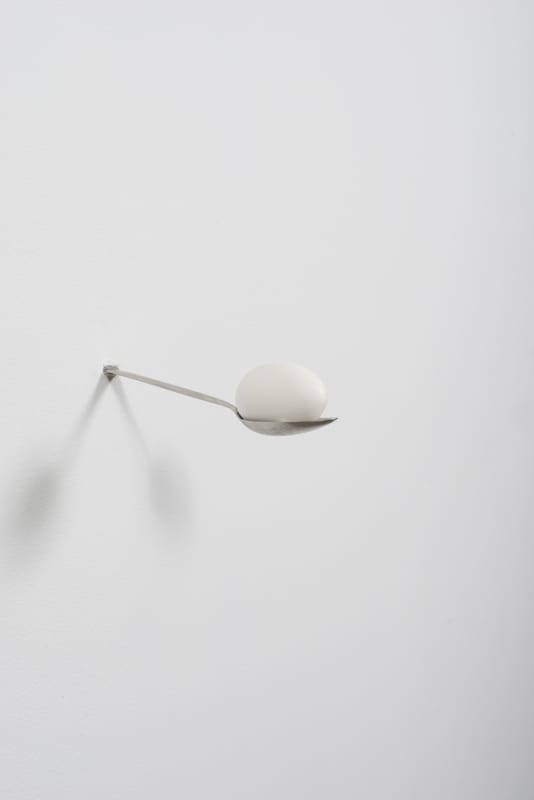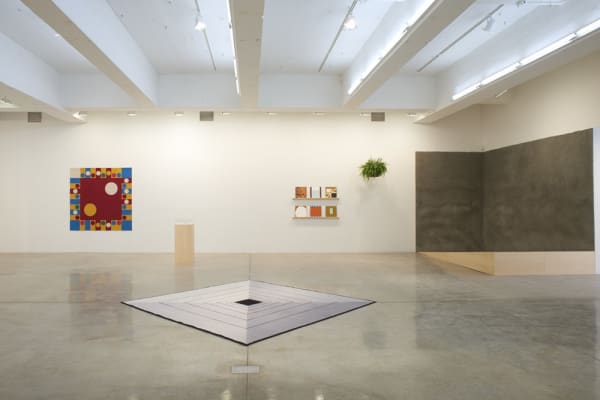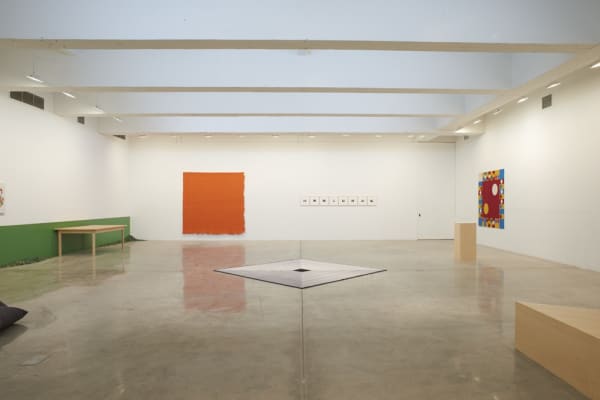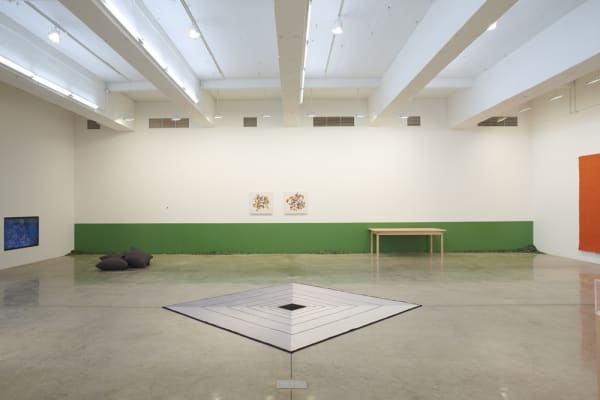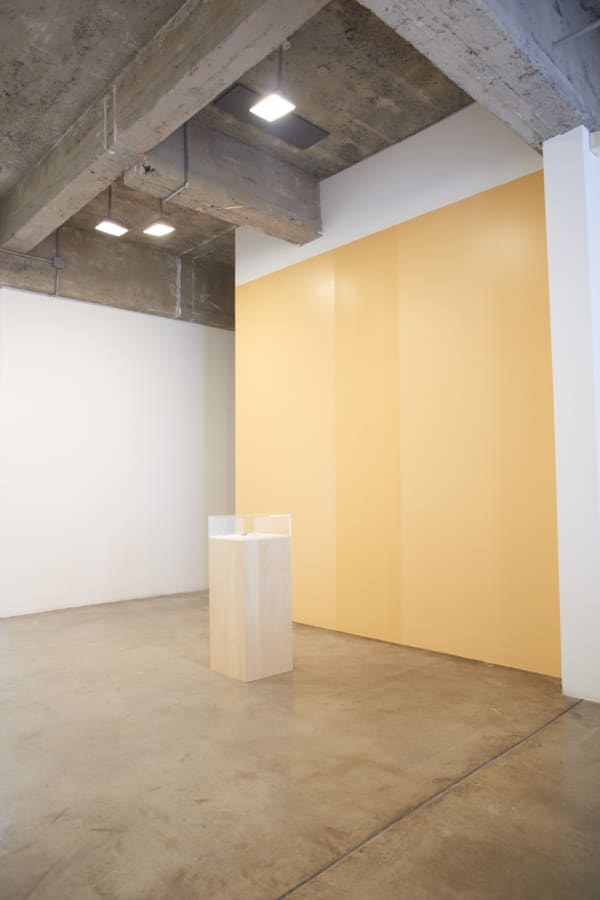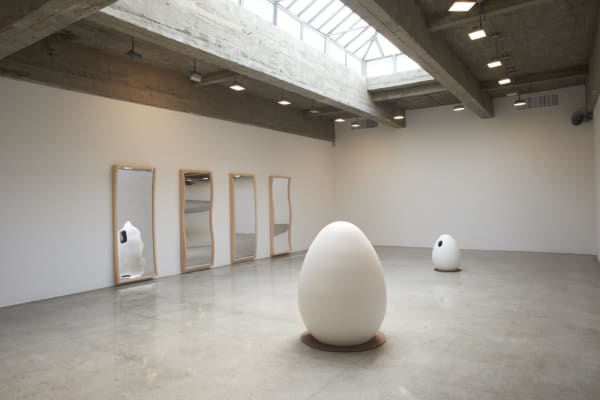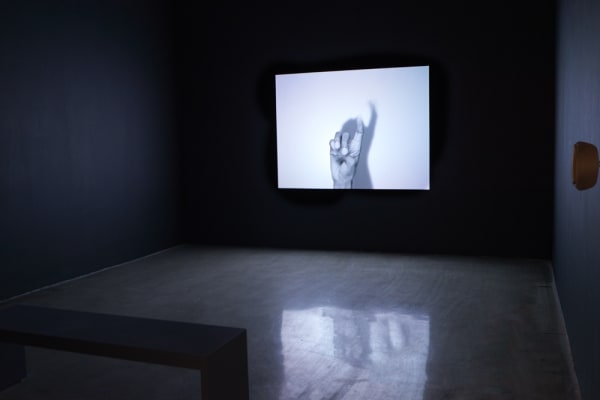Rivane Neuenschwander: The fever, the sewing box and a ghost.: Tanya Bonakdar Gallery, New York
Neuenschwander explores themes of childhood, memory and narrative through works across a diverse range of mediums including installation, video, painting and embroidery.
Tanya Bonakdar Gallery is pleased to announce a solo exhibition of new work by Rivane Neuenschwander. For the artist’s second presentation with the gallery, Neuenschwander explores themes of childhood, memory and narrative through works across a diverse range of mediums including installation, video, painting and embroidery. The title of the exhibition is taken from sections of Walter Benjamin’s Berlin Childhood around 1900, which probes the author’s memory of childhood through a succession of vignettes constructed around objects and places. In a similar manner Neuenschwander engages concepts of history, experience and identity to produce a subjective portrait of a generation and a place (Brazil in the 1970s) through the lens of individual and collective memory and the tools of psychoanalysis.
An important aspect of the exhibition is the process of collecting, selecting and possibly “translating” childhood memories into visual form, thus creating a singular portrait of the person to whom the memory belongs. Drawn from an evolving collection of memories from friends of Neuenschwander’s same generation who grew up in Brazil, this ongoing project is fueled by collaboration via letters, videos, drawings, photographs, and texts both long and short that are not present in the exhibition but contextually relevant to Neuenschwander’s project. Blurring the idea of authorship engendered by these exchanges, the artist reinterprets memory through a process of formalization that involves varying levels of intervention. Resulting artworks in the exhibition include a pile of confetti like a bed of Flamboyant tree leaves, the scent of gasoline remembered from car trips to the beach, and a series of paintings based on Chico Buarque LP album covers---Buarque was one of the most influential artists in 1970s Brazil. In keeping with the formal qualities of Neuenschwander’s oeuvre and her engagement with deeply layered references to cultural and art history, each work translates a complex narrative into a condensed and abstracted composition, such as L. D. (accident)’s street scene rendered in volumetric shapes and M.G.G. (Monopoly)’s board game realized as a hand sewn tapestry of elemental colors and forms. This collection of portraits coalesces to produce a poetic landscape of a specific moment in Brazilian history, helping us to reflect on the role of memory in our contemporary society in which the conventional ways of storytelling and transmission are no longer valid and inventing new forms of narrative is crucial in order to define both individual and collective identity.
In addition to works that function as portraits, Neuenschwander also presents works more generally related to psychoanalysis, a field in which a key aspect is the reconstruction of childhood’s earliest memories, from the most trivial to the most traumatic. In this context, what is defined as memory can be borrowed, invented, remembered, and (perhaps most importantly) repressed.
Works in the exhibition related to childhood and subjectivity include Cabra-Cega/Blind Monsters and Fear of fear (dengue fever). The projected images that comprise Cabra-Cega/Blind Monsters are inspired by drawings in a child’s notebook that Neuenschwander translated via the blind drawing technique, in which the artist observes the source imagery but not her own hand as marks are applied to paper. The tent-like structure onto which the images are projected doubles as a safe haven, accessible only to children. Neuenschwander engages with concepts of childhood memory and fear in the photographic series Fear of fear (dengue fever), a series of photographs taken with a pinhole camera depicting a person dressed in the guise of a dengue mosquito traveling through the streets of the artist’s hometown, Belo Horizonte, Brazil. Recalling carnival costumes worn in Brazilian villages, the image of the mosquito may inspire dread as Brazil currently combats a sharp rise in dengue fever cases due to people hoarding water (the insects’ breeding ground) in the wake of a severe draught in the south eastern part of the country. Traveling through Belo Horizonte’s tourist sites, parks and peripheral neighborhoods, the images might recall the well-known figure of the flâneur and suggest the pervasive and inescapable nature of paranoid and persecutory feelings when danger seems to lurk everywhere.
Upstairs continues the exploration of psychoanalysis, childhood, and memory with works such as the film Erotisme and the participatory installation self-misunderstanding. Autobiographical in nature, self-misunderstanding relates to a previous work by Neuenschwander entitled misunderstanding in which an egg’s shape is altered by the refraction of its image as it sits in a cup of water. Connected to literary, poetic, and artistic references to the egg in Brazilian culture, self-misunderstanding is a life-sized investigation of reflective distortions, revealing the abstract nature of memory and language as translated into visual form.
Rivane Neuenschwander (b. 1967, Belo Horizonte, Brazil) was recently the subject of an important survey exhibition mal-entiendos curated by Adriano Pedrosa at Museu de Arte Moderna de São Paulo (MAM-SP) in Brazil (2014), In 2010, the New Museum in New York presented Rivane Neuenschwander: A Day Like Any Other, a major survey exhibition that traveled to the Mildred Lane Kemper Art Museum in St. Louis, followed by the Scottsdale Museum of Contemporary Art in Arizona, Miami Art Museum, and the Irish Museum of Modern Art in Dublin through 2012. Other important solo presentations include Malmö Konsthall in Sweden (2010), St. Louis Art Museum in Missouri (2007), Carnegie Museum of Art in Pittsburgh (2007) Hirshhorn Museum and Sculpture Garden in Washington, DC (2007), Palais de Tokyo in Paris (2003), the Walker Arts Center in Minneapolis (2002) and Portikus in Frankfurt (2001).
All installation images above: Photo by Brett Moen
